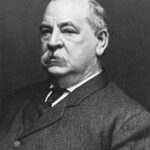The Crisis Unfolds
The Pullman Strike began in May 1894 when workers at the Pullman Palace Car Company protested wage cuts. The strike quickly escalated into a nationwide railroad boycott led by the American Railway Union. 📊 Over 250,000 workers across 27 states joined the movement, paralyzing rail transportation.
Cleveland’s Federal Response
President Cleveland faced mounting pressure as mail delivery ceased and interstate commerce ground to halt. On July 3, 1894, he deployed federal troops to Chicago without Illinois Governor John Peter Altgeld’s consent. ⚠️ This unprecedented action invoked the Sherman Antitrust Act against labor unions for the first time.
Constitutional Authority and Legal Precedent
Cleveland’s intervention established crucial federal precedent for labor dispute resolution. The decision demonstrated constitutional authority to protect interstate commerce and mail delivery. His administration successfully obtained federal injunctions against strike leaders, including Eugene V. Debs. 💰 The economic impact extended beyond railroads, affecting agriculture, manufacturing, and daily commerce nationwide.
Impact:
Immediate Economic Stabilization
Cleveland’s intervention quickly restored railroad operations and mail delivery across the nation. 💰 Economic losses, estimated at $80 million, ceased as commerce resumed within weeks. Agricultural products reached markets, preventing food shortages in major cities. The swift resolution protected thousands of jobs dependent on railroad transportation.
Legal and Constitutional Legacy
The Pullman Strike intervention created lasting legal precedents for federal labor relations. Federal courts gained authority to issue injunctions against labor strikes affecting interstate commerce. 🔥 The Supreme Court upheld Cleveland’s actions in In re Debs (1895), strengthening executive power. This decision influenced federal responses to labor disputes for decades.
Long-term Institutional Effects
Cleveland’s decisive action established the federal government’s role as commerce protector during labor conflicts. The intervention demonstrated presidential authority to act without state government consent when national interests were threatened. 🌍 International observers praised the swift resolution, maintaining America’s reputation for economic stability. However, the decision also intensified labor-management tensions and influenced future union organization strategies.
